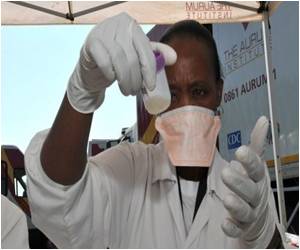Dietary supplements accounted for more than half the Class 1 drugs recalled by the US Food and Drug Administration
Dietary supplements accounted for more than half the Class 1 drugs recalled by the U.S. Food and Drug Administration from 2004-12, meaning they contained substances that could cause serious health problems or even death, a new study from St. Michael's Hospital has found.The majority of those recalled supplements were bodybuilding, weight loss or sexual enhancement products that contain unapproved medicinal ingredients, including steroids, said the study's lead author, Dr. Ziv Harel.
Almost one-quarter of the substances are manufactured outside of the United States, he said in the study published online in the journal JAMA Internal Medicine.
Unlike pharmaceutical products, dietary supplements do not require FDA approval before they can be sold. The FDA defines a dietary supplement as a product taken by mouth that contains a "dietary ingredient" such as vitamins, minerals, herbs, other botanicals, amino acids or substances such as metabolites. There are about 65,000 dietary supplements on the market consumed by more than 150 million Americans.
Of the 465 drugs subject to a Class 1 recall in the U.S. between Jan. 1, 2004, and Dec. 19, 2012, 237 or 51 per cent were dietary supplements. The majority of recalls occurred after 2008 for reasons unknown, the researchers said.
Supplements marketed as sexual enhancement products were the most commonly recalled dietary supplements (95, or 40 per cent).
Dr. Harel, a nephrologist whose research focus is patient safety, said that when the FDA learns of an adulterated dietary supplement, it is required to contact the manufacturer to trace the source of the product and initiate a recall. However, a recent investigation by the Office of the Inspector general determined that the FDA does not possess accurate contact information for 20 per cent of supplement manufacturers.
The FDA has recently introduced a number of initiatives aimed at mitigating the impact of the most common adulterated supplements, including the creation of multinational enforcement groups and widespread media campaigns focusing on improving awareness.
"Despite these initiatives, products subject to Class I recalls continue to be readily available for sale, which may be due to an increasingly complex distribution network associated with these products, as well as ineffective communication by the FDA to consumers," Dr. Harel said.
"We also found a number of recalled products to be manufactured outside of the U.S. where manufacturing practices may not be subject to the same oversight and regulation required of domestic companies."
Dr. Harel said increased efforts are needed to regulate this industry. "Keeping the status quo may taint the dietary supplement industry as a whole."
Source:JAMA Internal Medicine.












